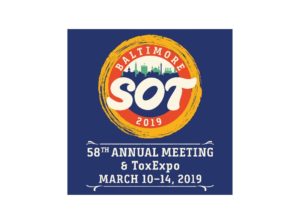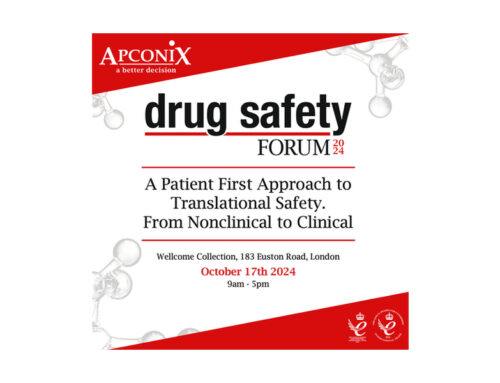SOT 58th Annual Meeting & ToxExpo – 3575: a Late Breaking Poster Presentation

At the Society of Toxicology 58th Annual Meeting and ToxExpo from March 10th to 14th at the Baltimore Convention Center, poster presentation on Thursday 14th 8:30am – 11:30am Poster Board P372 Convention Center Exhibition Hall.
Circulating Biomarkers of Neurotoxicity: Identifying Fluidic Endpoints Correlating with Central Nervous System Toxicity in a Rodent Model of Neurotoxicity.
Authors: S. Imam1, Z. He1, S. M. Lantz1, J. Raymick1, B. Robinson1, E. Cuevas1, S. Sarkar1, C. Law1, J. Hanig2, D. Herr3, D. MacMillan4, A. Smith5, S. Liachenko1, J. P. O’Callaghan6, D. B. Miller7, C. Somps8, I. D. Pardo8, J. B. Pierson9, R. Roberts10, B. Gong1, W. Tong1, M. Aschner11, M. Kallman12, D. Calligaro5, S. A. Feruson1, M. G. Paule1, and W. Slikker1
1US FDA/NCTR, Jefferson, AR; 2US FDA/CDER, Sliver Spring, MD; 3US EPA/NHREERL, Research Triangle Park, NC; 4US EPA/NHEERL, Research Triangle Park, NC; 5Eli Lilly and Company, Indianapolis, IN; 6NIOSH, Morgantwon, WV; 7NIOSH, Morgantown, WV; 8Pfizer, Inc., Groton, CT; 9HESI, Washington, DC; 10University of Birmingham, Birmingham, United Kingdom; 11Albert Einstein College of Medicine, Bronx, NY; and 12Kallman Consulting, Greenfield, IN.
Abstract:
Neurotoxicity has been linked to exposure to a number of common drugs and chemicals, yet efficient, predictive, and minimally-invasive methods to detect it are lacking. Fluid-based biomarkers such as those found in serum, plasma, urine, and cerebrospinal fluid (CSF) have great potential due to the relative ease of sampling, but at present, data on their expression and translation are lacking or inconsistent. Here, we present data on biomolecules that have some promise for detection and characterization of neurotoxicity induced by a single intraperitoneal injection of the known neurotoxic agent, trimethyltin (TMT). A single dose of TMT led to significant alterations in total oxidative stress markers, changes in lipid homeostasis, circulating interleukins and related factors, and markers of neuroinflammation. These findings provide an opportunity to explore the correlation of these fluid biomarkers with traditional neuropathology and magnetic resonance imaging (MRI) that serve to define TMT-induced neurotoxicity. Our data demonstrate a comprehensive correlation of TMT-induced neuropathology with several potential neurotoxicity biomarkers and MRI-based endpoints, findings suggestive of an involvement of specific pathways that can be assessed using peripheral fluids.
Click here to find out more about collaborative talks and presentations with ApconiX at SOT.
Click here to see more details of the SOT programme.





